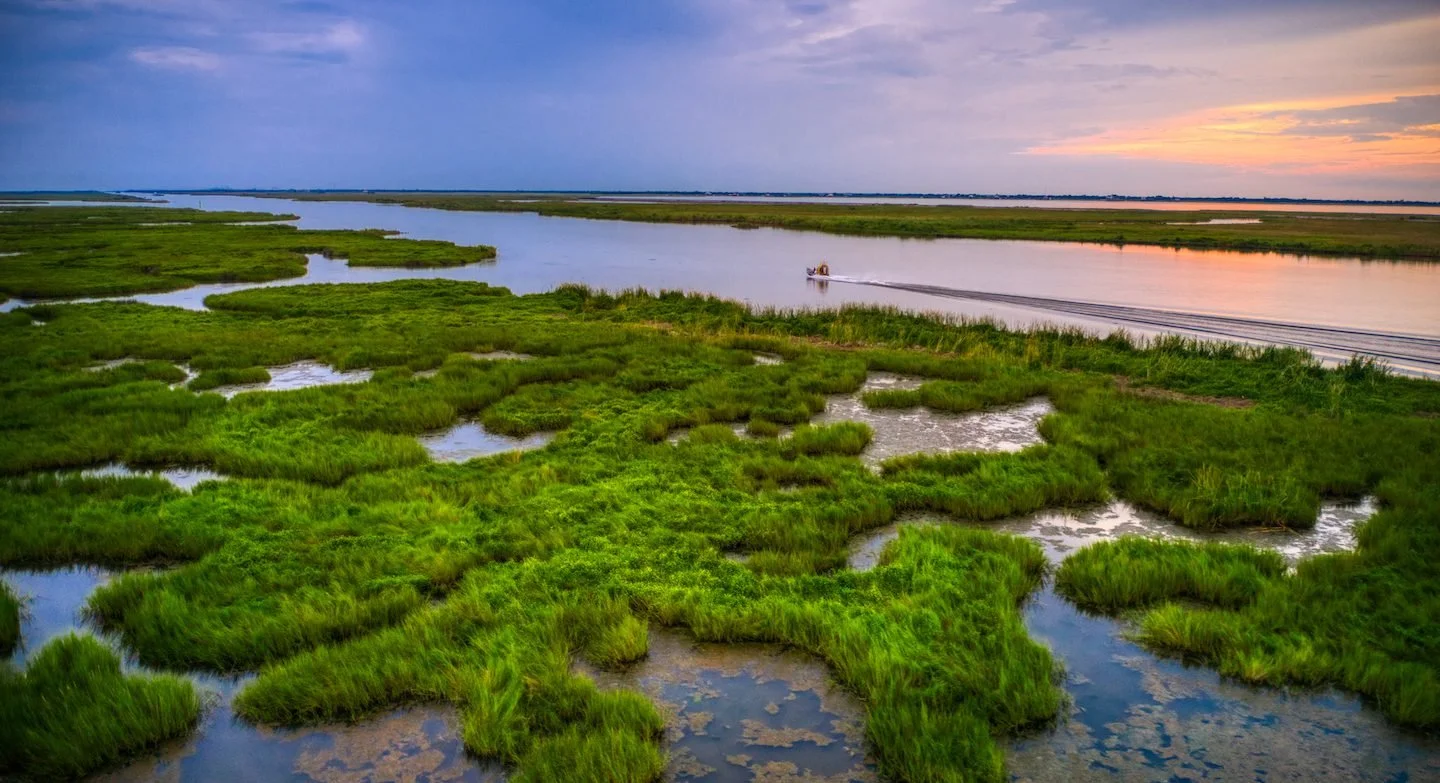Financing Nature: Adam Davis on the Economics of Ecological Restoration
For decades, protecting nature was seen as a moral or philanthropic act—something done for love, not livelihood. But what if restoring the planet could also be economically viable? Adam Davis, co-founder of Ecosystem Investment Partners, has spent his career aligning profit with ecological regeneration, proving that when financial systems value what nature does, restoration can happen at scale.
Riverpark Mitigation Bank is an ecological resource that permanently protects several species of endangered plants and rare vernal pools on the historic floodplain of the San Jacinto River, CA. Source: Ecosystem Investment Partners website.
Rethinking Value
Across the world, millions of acres of wetlands, forests, and tidal flats have been drained, logged, or degraded. The challenge isn’t knowledge—we know how to restore these landscapes. The real barrier is value. “We know how to bring back wetlands and marshes,” says Davis. “The real question is, how do we pay for it?”
For most of modern history, land has been appraised for what can be taken from it: its minerals, timber, or real estate potential. But the true wealth of nature lies in what it does—filtering water, storing carbon, providing habitat, and stabilizing climate. Recognizing those functions as financial assets rather than incidental benefits marks a profound shift in how we relate to land. This shift, from extraction to regeneration, is the foundation of mitigation banking, the field Davis helped pioneer.
Ecosystem Investment Partners developed the first mitigation bank on Alaska’s North Slope in Utqiagvik, AK. Source: Ecosystem Investment Partners website.
The Birth of a Market for Restoration
Davis’s path began not in high finance but in waste management. In 1990s California, new recycling laws required cities to rethink their relationship with waste. For Davis, it revealed how incentives shape environmental outcomes. “The thing I was particularly focused on was the economics—what were the deal terms and the structures that allowed the more good you do, the more money you make,” he says.
Years later, that same principle shaped mitigation banking: a system in which developers who impact ecosystems, such as wetlands, must offset those losses by funding or purchasing restoration elsewhere. These restoration projects—scientifically verified and permanently protected—generate measurable ecological “credits,” each representing a quantified amount of restored or preserved land and its ecological functions. Those credits can then be purchased by developers to balance the environmental impact of their projects. The result is a functioning marketplace where restoration is not a charitable act but a viable enterprise.
When Nature Enters the Economy
Mitigation banking marked a shift, where the value of living systems becomes visible, measurable, and investable. Through firms like Ecosystem Investment Partners, billions of dollars have flowed into large-scale restoration across the United States, supported by institutional investors ranging from pension funds to university endowments.
“To me,” says Davis, “it’s one of the most exciting moments in this story—that people can now make a living improving ecology. That what nature does is finally recognized as valuable.”
Since Davis and his partners founded Ecosystem Investment Partners in 2007, the field has grown into a credible industry guided by rigorous standards and transparent outcomes. Each project delivers verified ecological improvements, permanent land protection, and a structure for long-term stewardship. Together, these efforts have demonstrated that restoration can operate at scale and attract serious capital—moving it from the margins of advocacy into the architecture of the modern economy.
EIP has restored 508 acres of coastal marsh habitat that is now home to fish, waterfowl and numerous other wildlife at the Chef Menteur Pass Mitigation Bank, located in Orleans Parish, Louisiana. Source: Ecosystem Investment Partners website.
Redefining Growth
For Davis, the next frontier lies in transforming how we assign value itself. Today, nearly every acre of land carries an appraisal tied to what can be built or extracted from it. He believes the future depends on shifting that lens—on creating financial systems that reward the ongoing health of land, water, and life.
This redefinition of value marks a deeper evolution in how we understand progress. When economic structures begin to honor the work of restoration, growth takes on a new meaning: one rooted in regeneration rather than depletion.
As ecological restoration becomes a viable financial pathway, it opens a future where care for the planet and prosperity no longer stand in opposition, but move forward together.
This podcast isn’t just about ideas—it’s about action. From these conversations, two organizations have emerged to bring regenerative real estate to life:
Latitude Regenerative Real Estate is the world’s first regenerative-focused real estate brokerage, dedicated to aligning values-driven buyers and sellers. With a strong presence in the Pacific Northwest and Great Lakes regions, Latitude also supports purpose-driven developments across North America through strategic marketing and branding services. If you're looking to buy, sell, or amplify a regenerative project, Latitude is your trusted partner.
Hamlet Capital is an investment and development firm committed to building resilient communities rooted in working farms. If you’re developing an agrihood or conservation community, we’d love to hear from you. Together, we can turn visionary ideas into thriving, place-based investments.








